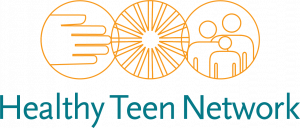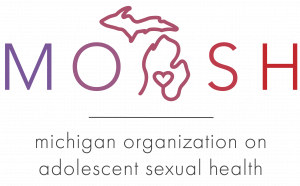What does (and doesn’t) motivate people to listen to messages about the value of sex education? In this mini-course, practice building effective messages by working through real-world scenarios using evidence-based communication techniques.
Training Hub
The Sex Education Collaborative Training Hub lists trainings for sex educators, facilitators, and other professionals on best practices for sharing important information with clients and the public. From teaching anatomy inclusively to effectively addressing bias in the classroom to addressing racial justice and equity in sex education, the Training Hub includes trainings, technical assistance, and policy support from state, regional, and national leaders in the field of sex education.
Please note: The Training Hub includes both in-person and online professional trainings. If you see a training you are interested in and it isn’t listed as virtual, please reach out directly to any of our members to find out what's possible!
Trainings Offered by State-Based and National Organizations
Displaying results 126 - 130 of 137Building Support for Sex Education in Schools
- Indicator 1 (K-12): Describe three health (e.g. physical, social and/or emotional) and/or academic benefits of sex education for young people
How to Talk About Dual Protection
Designed for educators and clinicians, this eLearning gives participants the information and skills they need to address the increasing rates of STIs, whether working in the classroom or clinic. In this training, you will practice communicating with people who are resistant to using dual protection by using real-life scenarios tailored to your profession. Walk away feeling ready to explain dual protection and confident communicating about the barriers young people are experiencing.
- Indicator 2 (6-12): Demonstrate the steps necessary for effective external and internal condom use and how to access condoms. (S)
- Indicator 4 (6-12): Explain methods of contraception, including the latest medical advances that are popular among young people.
- Indicator 5 (6-12): Demonstrate the steps necessary for effective external and internal condom use and how to access condoms. (S).
- Indicator 7 (6-12): Identify three medically accurate and youth-friendly resources for STD/STI and HIV prevention, testing, and treatment
Human Trafficking 101
This is the first in a series of eLearning units focused on human trafficking. Subsequent units include content specifically for medical providers, educators, parents, caregivers, faith-based professionals, and other youth-serving professionals to better understand the role they can take in addressing sex and labor trafficking. Via an interactive, self-paced unit, participants will explore critical elements of sex and labor trafficking and steps they can take to support victims and survivors in your community. This unit promotes learning though stories, activities, and short quizzes.
Through Healthy Teen Network’s partnership with the University of Maryland School of Social Work’s Prevention of Adolescent Risk Initiative, we are pleased to share resources on human trafficking. Although these resources are focused on specifics for the state of Maryland, anyone from any state can learn about human trafficking as well.
SIECUS is well poised to provide policy support as we are the only organization whose sole mission is to advance sex education policy at the federal, state, and local levels. For the past 55 years, SIECUS has advocated for the rights of all people to comprehensive sexuality education, and the full spectrum of sexual and reproductive health services. SIECUS is more committed than ever to the fight for the equitable provision of comprehensive sexuality information to vulnerable and marginalized populations especially people of color and LGBTQI identifying youth—and for the elimination of all barriers to access to quality reproductive health services, for reproductive justice to be actualized.
SIECUS equips state and local leaders with the knowledge they need to be confident and powerful advocates. Our staff conduct workshops and trainings around the country and provide one-on-one technical assistance by phone and email. Our policy support helps state and local leaders become stronger advocates for their missions and empowers them to addresses the root cause of key reproductive justice and sexual rights issues, moving us toward a society where issues like gender equity, sexual and reproductive health, racial justice, LGBTQ inclusion, consent, personal safety, and autonomy are well—established as part of our normal reality. Our website is a place where advocates can search our robust collection of toolkits, fact sheets, reports, and our signature report, the SIECUS State Profiles, as well as connect with a team member for one-on-one technical assistance.
Personal Safety: Knowing Signs and Drawing Lines
Personal Safety: Knowing Signs and Drawing Lines will help increase middle and high school health professionals’ knowledge of various forms of interpersonal violence that young people often face, as well as provide concrete actions that educators and professionals can take to respond.
Format/platform:
- Online Learning Management System (Canvas e-learning), hosted by Rutgers University
- Six-hours of total contact time utilizing videos, podcasts, instructional games, discussion boards, written assignments, presentations, readings, and visual animations
- Asynchronous
- Instructor-led
All content is aligned to the National Sexuality Education Standards, the National Teacher Preparation Standards for Sexuality Education, the Professional Learning Standards for Sex Education, and the Areas of Responsibility and Competencies for Health Education Specialists.
- Indicator 2 (K-12): Demonstrate three student-centered instructional approaches that support a variety of learning styles. (S)



